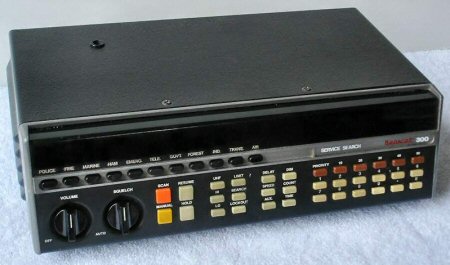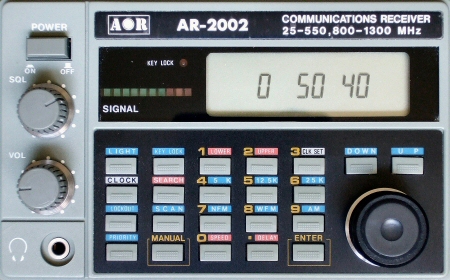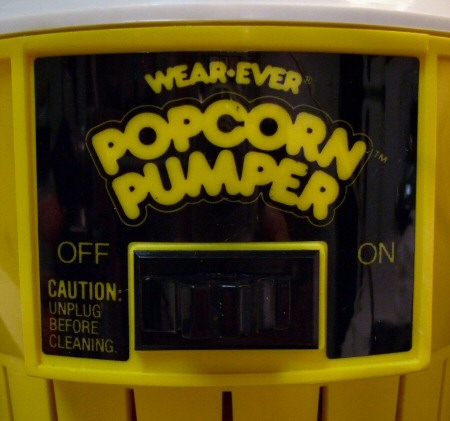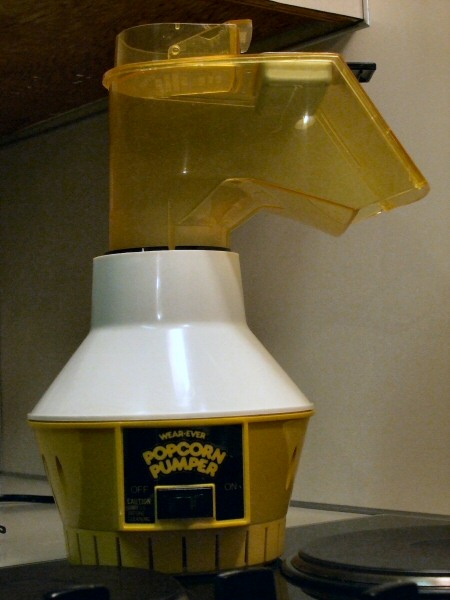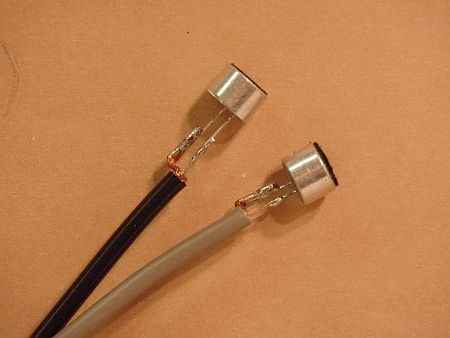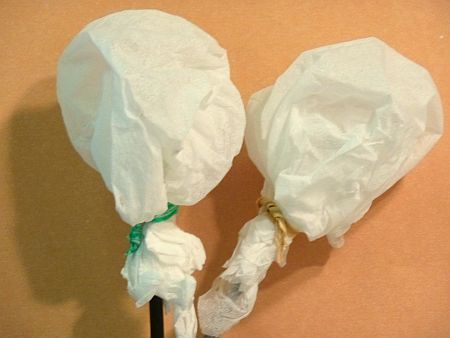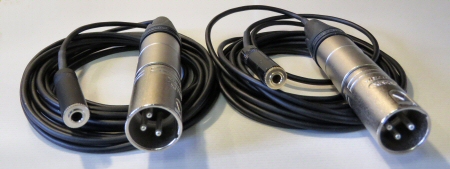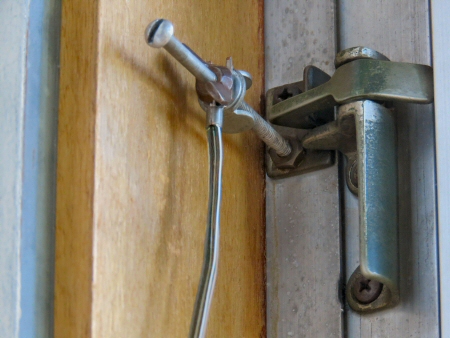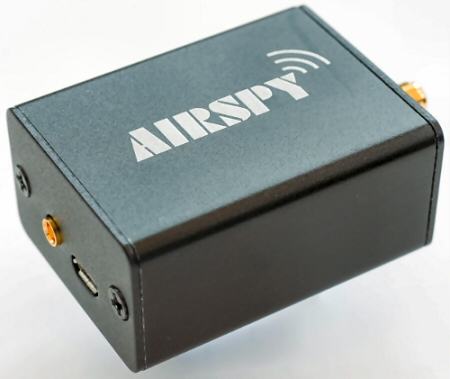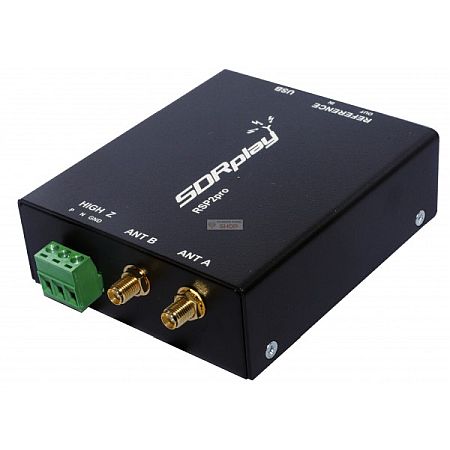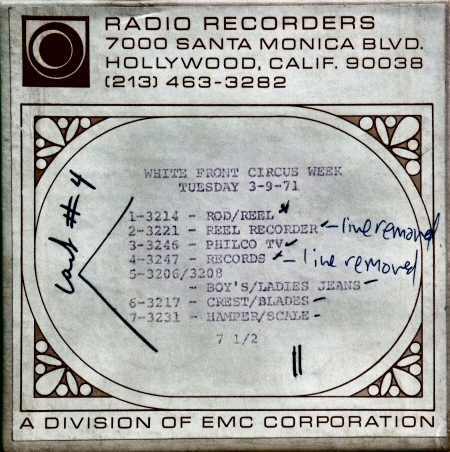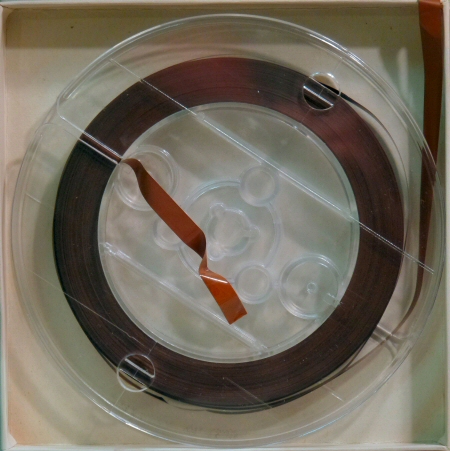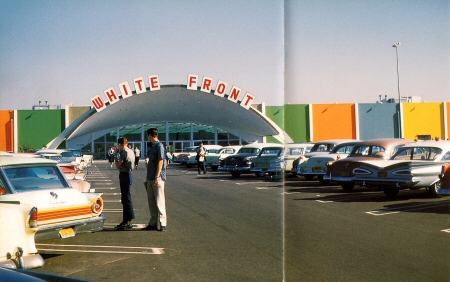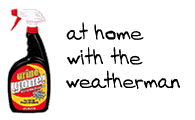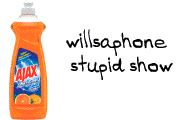From my collection of open reel tapes, here is a 60-second radio commercial for Mayfair Markets, a grocery chain from the 1960’s and 70’s. My favorite line ,”The second thing that happens is that the butcher loses control.” More about this grocery store chain can be found here, here, and here.
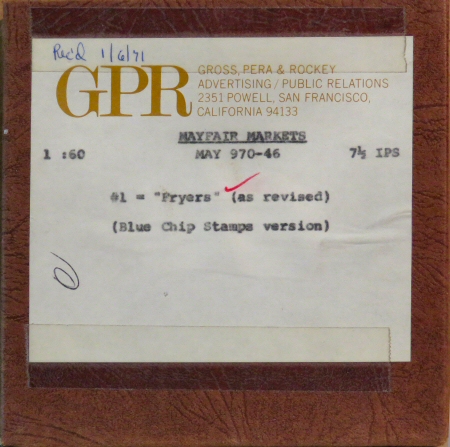
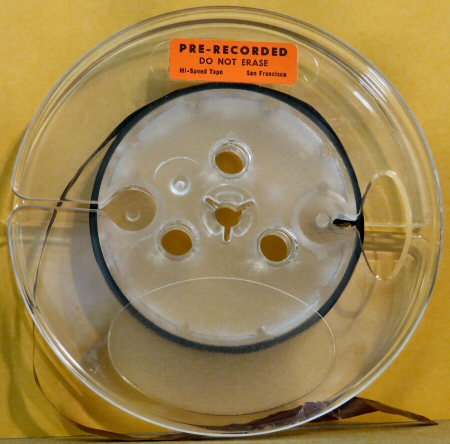

Mayfair Markets Radio Spot 1971
Analog Cellular Phone Calls 1988
This is a recording from January 1988 of mobile phone calls. The cellular phone system was analog and could be eavesdropped on if you had a radio that could receive between 800 and 900 megahertz, frequency modulation, or FM. I had access to such a receiver as an employee of Televents Cable TV in Martinez, California. Many of the service techs were issued an AOR, model AR-2002 communications receiver with an antenna tuned to around 150 megahertz. During times when there weren’t many service calls, we would drive slowly through neighborhoods with our radios tuned to one of the video carriers of the “midband” cable channels listening closely for the distinctive “sync buzz” (very close to 60 hertz with lots of higher harmonics). If the noise was detected, that was “signal leakage,” cable TV signals radiating out from the cabling, acting like a radio transmitter. This violated FCC rules as it potentially could interfere with aircraft communications. We would then start looking for loose, corroded connections. Often the culprits were “F fittings.” We didn’t stop checking for problems until the signal was at an acceptable low enough level. I noticed the radios we were using for our work, the AR-2002, tuned up through 1300 megahertz. On my days off work, I’d take the receiver home and record cellular phone calls. I’m quite sure the radio I’m demonstrating in Sonic Outlaws is the company issued unit, before I bought my own.
Most of the calls are not complete because as people driving would get out of range of one cell tower and connect seamlessly to another, the frequncy would change. I did a lot of filtering and a liitle noise reduction to clean up the audio quality. The frequency range is from just under 200 hertz to a little over 4000 hertz with extra notch filtering at 120 and 240 hertz.
Monty Python Failure
Made this from a MIDI file and a trial version of Reaper without much thought or effort.
Televents Cable TV Dispatch Early 1980s
Here is another recording of cable television employees being dispatched to various jobs around Contra Costa County, California. This time I’m on my job as service technician number 73. This was recorded on my Superscope C-104 cassette recorder with my Bearcat 300 police scanner. The Bearcat has the ability to turn a tape recorder remote switch on and off when the squelch opens and closes. I simply set it up before work and the recorder was able to capture at least part of a typical work day of myself and other workers being dipatched to service calls.
Thanksgiving 2000
Part 1
Part 2
Here is a recording of Richard Lyons and myself on the first Thanksgiving I celebrated after my parents and grandparents passed away. It features the sounds of kitchen appliances, pots, pans, and it takes place at my parents home in Martinez, California. Richard’s wit and my obsessive compulsiveness show throughout. I used my Superscope C-104 cassette recorder and a RadioShack condenser microphone capsule for recording. You may have noticed I categorized this as a “Family Tape” as Richard was pretty much like a brother and a member of Negativland, as well.
Televents Cable TV Dispatch Summer 1984
I made this recording on a day off from my job as a service technician at Televents Cable TV in Contra Costa County, California. This is a new capture just today, using my Sony TCD-5M cassette recorder. The sound is stereo with two scanner/communications radios. Most of the audio is radio channel 1 for service techs (463.875 MHz) and the other is radio channel 2 for installers (464.175 MHz). Most of the time the audio is playing channel one, but because there is a different receiver panned left and right, there is a stereo phasing and different EQ effect. I think I used an AOR AR-2002 and a Bearcat 300 for receiving. The Bearcat has more rolled off highs. Might be good listening with headphones for a binaural effect. I did not apply any noise reduction which is proper for archiving.
Sony TC-D5M
Bearcat 300 Scanner
AOR AR-2002 Communications Receiver
Happy Little Weatherman
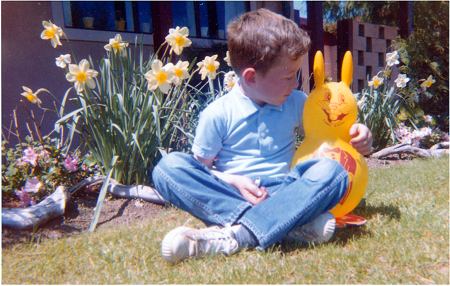
Here I am, seven years old with an inflatable buddy in 1961. This at my grandmother’s house in Santa Rosa, California. Kennedy was president, I had my pipes and pet toads. What more could a boy want?
Christmas 1981 The Popcorn Pumper – Updated
Here is a recording of my family on Christmas 1981 at my home in Martinez, California. I can’t remember how this was recorded, but most likely I used my Superscope C-104 monaural cassette recorder. For this presentation, the cassette tape was played on my Sony TC-D5M stereo recorder, with Dolby noise reduction switched off, producing left and right monaural sound. The audio was captured into my computer with VSTHost. Normally, I will choose either left or right (not both channels) and create a mono .wav file, if I know the tape is monaural. This tape has quite good audio on both left and right with no audible phasing effects from the TC-D5M (maybe I have a tin ear) so I left the recording in stereo. If you prefer, you can fade down one side for true monaural sound. I did a little editing and level adjustment with Adobe Audition, and then created an Mp3 at 320 Kbps with RazorLame.
As I mentioned previously in the post “Guess What, I’m Still Here!” this recording has my mother trying out a new popcorn popper, specifically a Wear-Ever Popcorn Pumper. Pictured below is the same unit from 1981. It does still work quite well! If you’re lucky, I will try to make a video of the Popcorn Pumper in action.
This is a video I made today on February 20th. 2018, showing the Wear-Ever Popcorn Pumper my mother used in 1981. It still works perfectly today. This post was originally from December 17, 2013.
Possible Scam Call and Recording Demonstration
I’ve been getting this call a couple of times a week for about a month and have not received any bills, either. I figured this would make a good demonstration of how to record phone calls in high quality. This Panasonic cordless phone has the smaller 2.5-millimeter jack with three conductors. I made an adapter cable using a 2.5-millimeter plug with the tip being a microphone in and ring (middle conductor) being output and wired to the black RCA jack. The third conductor, the sleeve is a common ground for the output and the input. The red RCA jack is for a microphone and it has about 1.5 volts of plug-in phantom power for electret condenser microphones.
Me and My Pipes
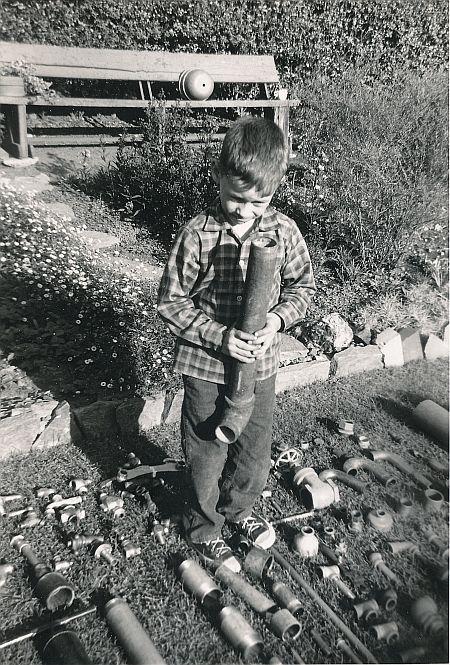 As a young boy in the 1960s, growing up in Berkeley, California, I wanted to be a plumber. Check my slideshow for a couple more images of my pipes.
As a young boy in the 1960s, growing up in Berkeley, California, I wanted to be a plumber. Check my slideshow for a couple more images of my pipes.
Electromagnetic Energy Inside My House
There seems to be an area inside my house where this meter which is totally passive (no battery or active electronics, only a 4 foot whip antenna) can be deflected more than half way. Only electricity can do that. I made sure anything that can produce electromagnetic energy was switched off or as far away from the meter as possible. Devices include a baby room monitor, cordless or cell phones, and wi-fi. I’ve known about this ever since I moved into this house in 2002. It is probably the cause of poor radio reception I’ve been plagued with, as some tuners can become “desensed” when bombarded with strong electromagnetic fields. It’s kind of creepy and I wonder if it is slowly driving me out of my mind. I originally posted this on FaceBook about three months ago, but rest assured this phenomenon is still happening!
New Year's 2018
Here is my recording of New Year’s 2018 featuring the sounds of the celebration at midnight at my home in Seattle. The recording starts at about 11:55 PM, December 31st, 2017 and ends at about 12:17 AM, January 1st, 2018. Along with an inexpensive Dell laptop computer, I used VSTHost with LoudMax as a VST plug-in. A little editing, normalizing and noise reduction was performed with iZotope RX6. Pictured below are the microphones, adapter cables, and recording interface. One microphone was placed outside at the front of my house, facing west, and the other just outside on my back deck, facing east. I recommend listening on headphones for the full effect.
Inexpensive electret condenser microphones
Phantom power to electret plug-in power adapters by Naiant Studio
What is an electret microphone?
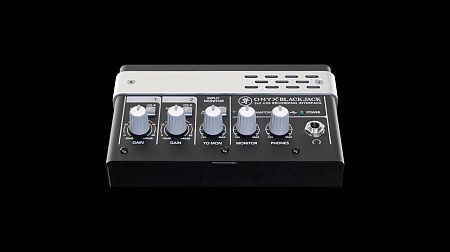 Mackie Onyx Blackjack recording interface
Mackie Onyx Blackjack recording interface
Grounded metal window frame to prevent AC hum from nearby power lines from being induced on west facing microphone
New Year’s Far Rockaway, Queens, New York
This was captured from an online open microphone from approximately 11:55 PM, December 31st, 2017 to about 12:14 AM, Eastern Standard Time, January 1st, 2018. This micophone seemed to be plagued with a lot of rumbling wind noise with clicks. I used a couple of passes of declick, and then phase rotation and normalization to -.3 dB in iZotope RX6. The sound is much improved, although the volume drops every time there’s a a gust of wind, and a compressor reduces the gain.
The Doris Day Show – December 1970
Here is an episode of The Doris Day Show from December 1970 and the name of this episode is “It’s Christmas Time in the City.” This was another favorite of Richard Lyons and more information is available on IMDb.
Thanksgiving 1988
Here is home video from Thanksgiving 1988 featuring my mother, grandmother, and my grandmother’s cat, Gretchen. This was at my grandmother’s home in Santa Rosa, California and recorded using my second 8-millimeter camcorder, a Sony CCD-V220.
Seattle Scanner – November 30th, 2017
This video shows the latest technology for radio receivers. It’s software – defined radio. There are two receivers operating, picking up communications like a police scanner. One of the receivers called Airspy can be programmed as a scanner and I set it to receive two banks of frequencies. One I named “other” for general communications like taxi drivers, tow companies, contractors, heating and cooling companies, plumbers, trains, and general public services that are radio dispatched. Since Seattle is in a building boom, there are a lot of crane operators, too. The other bank of frequencies are exclusively school bus drivers. I picked school bus drivers because like the “other” category most of those radios are analog and need no special decoding software to hear them. The software for Airspy is called SDR# or SDRSharp. SDRSharp will operate different types of hardware, such as some of the many “dongles.” The other receiver called SDRplay RSP2 doesn’t scan, but it can receive everything that Airspy can and more, such AM and FM broadcast and shortwave. SDRplay uses software called SDRuno which can be set to have audio on left or right only and I selected audio out left channel only. While Airspy scanned I manually changed frequencies on SDR Uno (later in the video) and sometimes both radios would be on the same frequency creating an echo or phase shifting effect.
More Stupidity
White Front Discount Stores Doctor Weird 1971
From my collection of open reel tapes, here is another radio commercial for White Front, a discount department store from the 1960’s. This one from my other reel of White Front radio spots is a little longer than 50 seconds. It is also from 1971. By the 1970s, White Front stores were in bankruptcy and these radio spots, at least to me, signal the beginning of the end for White Front. Go here for another White Front radio ad.
It’s very likely the words “Very Wierd” with “weird” being misspelled was not on the box originally.
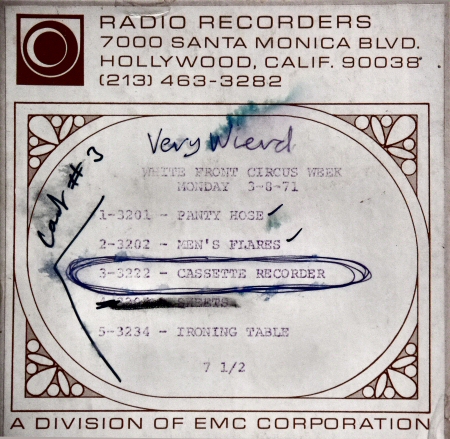
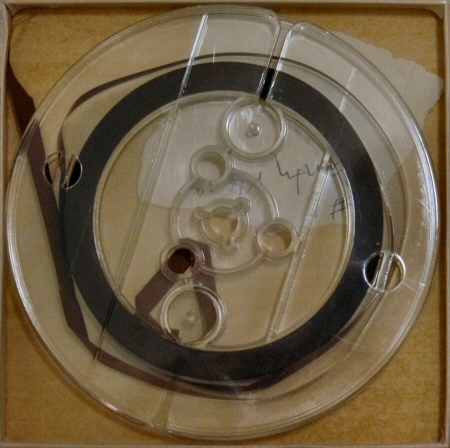
White Front Discount Stores Radio Spot 1971
The Dick Vaughn Show August, 1982
Made at Televents Cable TV Public Access Studio, Martinez, California.
Recent Posts
- Buddy Is Bored
- Pencil Man
- My Stomach 2022
- 4th of July Ambience 2021
- Richard Lyons, Avery Mann & girlfriend, and Myself at Snoqualmie Falls, Washington in 2005
- New Year’s 2021
- Dirty Booper
- Lady Seiko Watch Commercial
- 4th of July Ambience 2020
- The Stupid “T” Horn
Categories
- 16 Millimeter Films
- Answering Machine Recordings/Ringtones
- Baby Room Monitors
- Booper
- Cats and Bees
- Cleaners and Cleaning Supplies
- Family Tapes
- Ham Radio Jammers
- Microphone Tests
- Music I Listen To
- My Vintage Equipment
- Open Reel Tapes
- Outside Microphone & Field Recordings
- Pictures & Drawings
- Random Audio & Video
- Street Names Update
- Uncategorized
- Weather
| M | T | W | T | F | S | S |
|---|---|---|---|---|---|---|
| « Jul | ||||||
| 1 | 2 | 3 | 4 | 5 | ||
| 6 | 7 | 8 | 9 | 10 | 11 | 12 |
| 13 | 14 | 15 | 16 | 17 | 18 | 19 |
| 20 | 21 | 22 | 23 | 24 | 25 | 26 |
| 27 | 28 | 29 | 30 | 31 | ||

